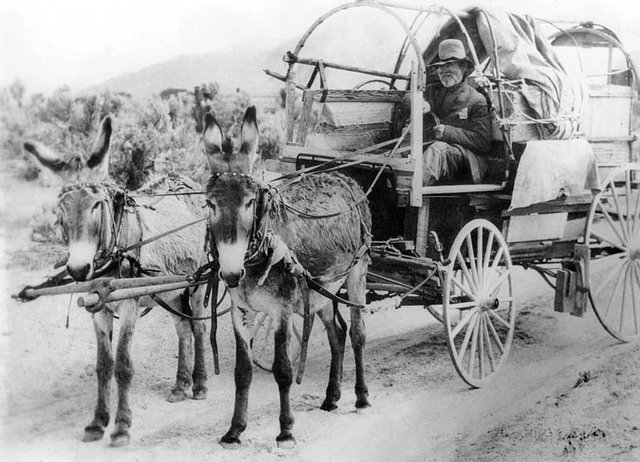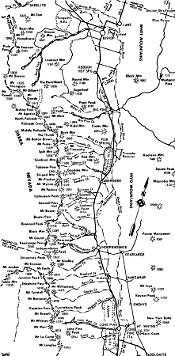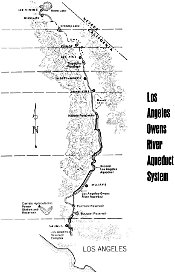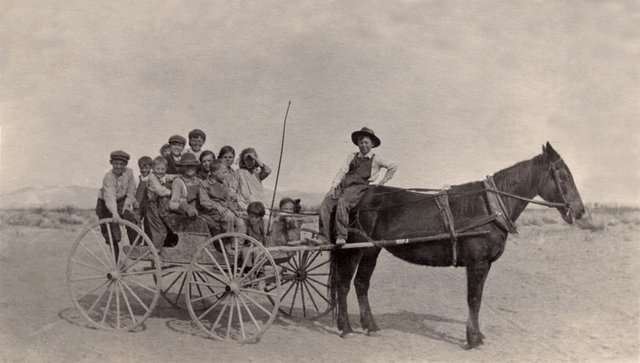
The Eastern California Museum’s Virtual Transportation Museum
The Virtual Transportation Museum is funded by the American Recovery and Reinvestment Act of 2009 (ARRA). ARRA required states to spend 3 percent of their highway transportation funding on Transportation Enhancement (TE) projects. Inyo County approved the submittal of the Virtual Transportation Museum TE grant application and the project was programmed by the Inyo County Local Transportation Commission as a “construction” phase and approved by the California Department of Transportation (Caltrans). TE projects are funded by the Federal Highway Administration and are community-based projects that expand travel choices and enhance the transportation experience.
TE projects must be one of 12 eligible activities. The Virtual Transportation Museum qualified as a “transportation museum.” This is the first “Virtual” Transportation Museum project completed in the United States. This is an unusual “construction” project in that no structures were built or modified -- the project required innovation by County staff and the Caltrans District 9 Local Assistance staff to navigate through the federal project paperwork.
ASM Affiliates was awarded the contract for the project. Principle researcher and writer Lynn Johnson, of Independence, headed up the effort to review transportation-related photos from the Eastern California Museum’s photo archive, which holds about 25,000 prints and negatives. More than 500 photos were eventually selected and digitally scanned. These photos, and the accompanying text and captions, make up the “museum’s” 13 sections.
The Eastern California Museum was founded in 1928, and has been operated by the County of Inyo since 1968. The mission of the Museum is to collect, preserve and interpret objects and information related to the cultural and natural history of Inyo County, the Owens Valley, and the Eastern Sierra, stretching from Mono Lake to Death Valley and from the Sierra Nevada Mountains to the Great Basin.
Artifacts and information are interpreted for the public through the Museum’s exhibits, publications, and educational programs. The Museum’s History Files, Research Library, and archive of 27,000 photos are made available to those doing academic research and members of the public conducting private or family research. About 1,200 photos of the region’s towns, Native Americans, industry, mountains, resorts, and families are on permanent display, along with following permanent exhibits:
The museum’s exhibit of Native American basketry, numbering more than 400 pieces, represents one of the largest, exhibits of Owens Valley Paiute Shoshone and Panamint Shoshone basketry in the nation. The collection, along with rare Paiute beadwork, arrows, bows, and art, is housed in the Anna and OK Kelley Gallery of Native American Life.
The museum’s Manzanar collection documents the World War II Relocation Camp in the Owens Valley, which housed about 10,000 Japanese Americans for the war’s duration. The exhibit contains artifacts, artwork, and photos that present camp life on a personal level and through the eyes of the internees.
Photos and artifacts recall the extraordinary life Eastern Sierra resident and pioneering climber Norman Clyde, who was aptly called “the pack with legs.” During the 1920s and 1930s, Clyde was credited with more than 100 first ascents in the Eastern Sierra. With his trademark 80-pound pack, he explored for weeks on end during the summer, and was also a key guide and leader of the era’s famed Sierra Club “High Trips” into the Eastern Sierra.
An extensive History File and photos documents the City of Los
Angeles’ purchase of the Owen Valley’s water rights and land in
the early 1900s, and the construction of the Los Angeles Aqueduct,
which has provided critical water supplies to the city since 1913
to today. The files also detail the ongoing relationship between
L.A. and the Owens Valley.
The museum bookstore features a wide variety of titles, from fiction by renowned Victorian Era writer Mary Austin (who wrote her most successful stories, “The Land of Little Rain,” while living in Independence), to non-fiction about California and Owens Valley water issues, general histories and photo books about Death Valley and the Eastern Sierra, and field guides that describe the area’s flora and fauna.




